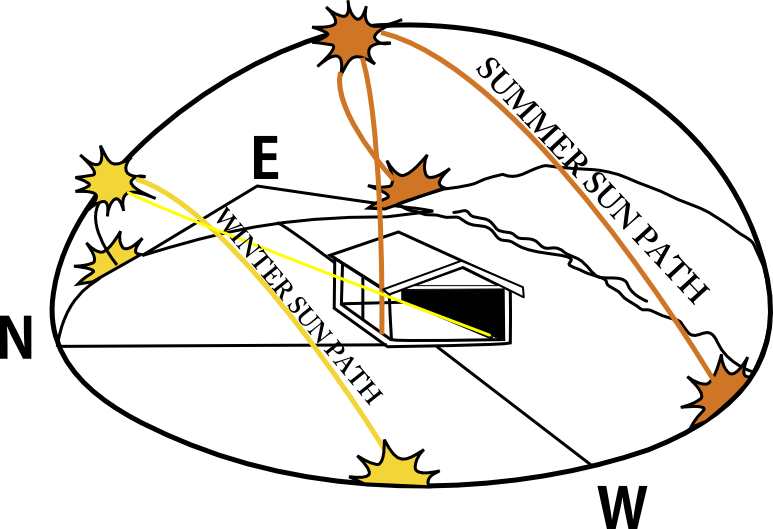As you are aware, the sun rises from the east and sets in the west. During the regular tracking though, the sun moves towards the north, making north the best face to maximise your solar gain.
Another factor to take into account when optimising your solar gain is the season. As you can see in the diagram, solar gain in summer is higher due to the position of the sun. In winter, the sun is further north, however the angle is not as optimal compared to summer.
This being said, if you have northern facing roof space free from any obstructions such as trees or buildings, then you should opt to install solar panels there, so that you are guaranteed the best solar gain.

Solar gain and solar panel directional losses
- You can also install solar panels on the east and the west facing front
It’s not uncommon to have solar panels installed on the east or west facing sides of your home or business. Although the solar gain is lower, the directional losses are not that great.
- The solar panel directional losses for north-east and north-west vary from around 3% to 4%.
- For an east or west facing roof, your solar gain loss will be around 12% to 18%
An experienced solar installer or sales rep will be able to work out the optimum solar panel direction and angle on your property, to will give you the most solar gain and best return on investment. Although not essential, it is advised that you ask for a plan or design for your solar power system, outlining the options for installation and the exact location where the solar panels will be placed.

“What if a sales rep or installer recommends that I install the solar panels on the south facing roof?”
“I suggest you get a second opinion. Honestly, it’s a no brainer! Unless of course you live in the northern hemisphere.”
